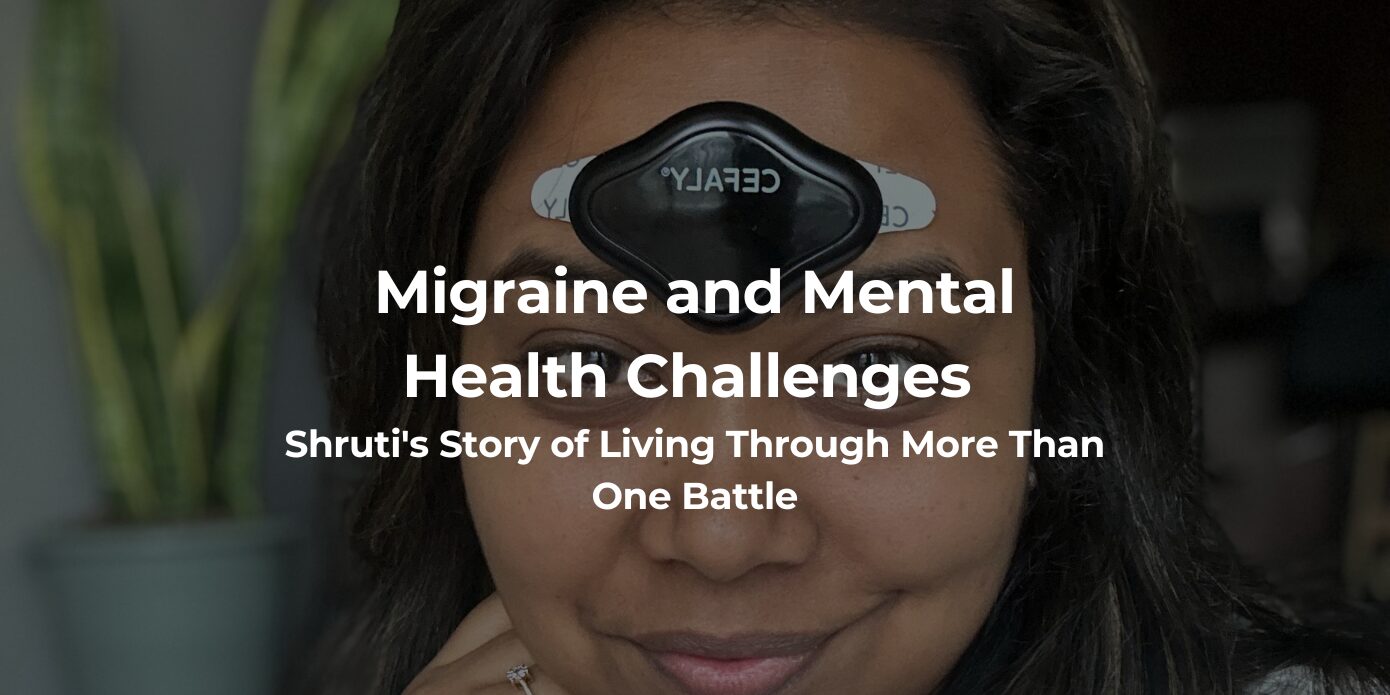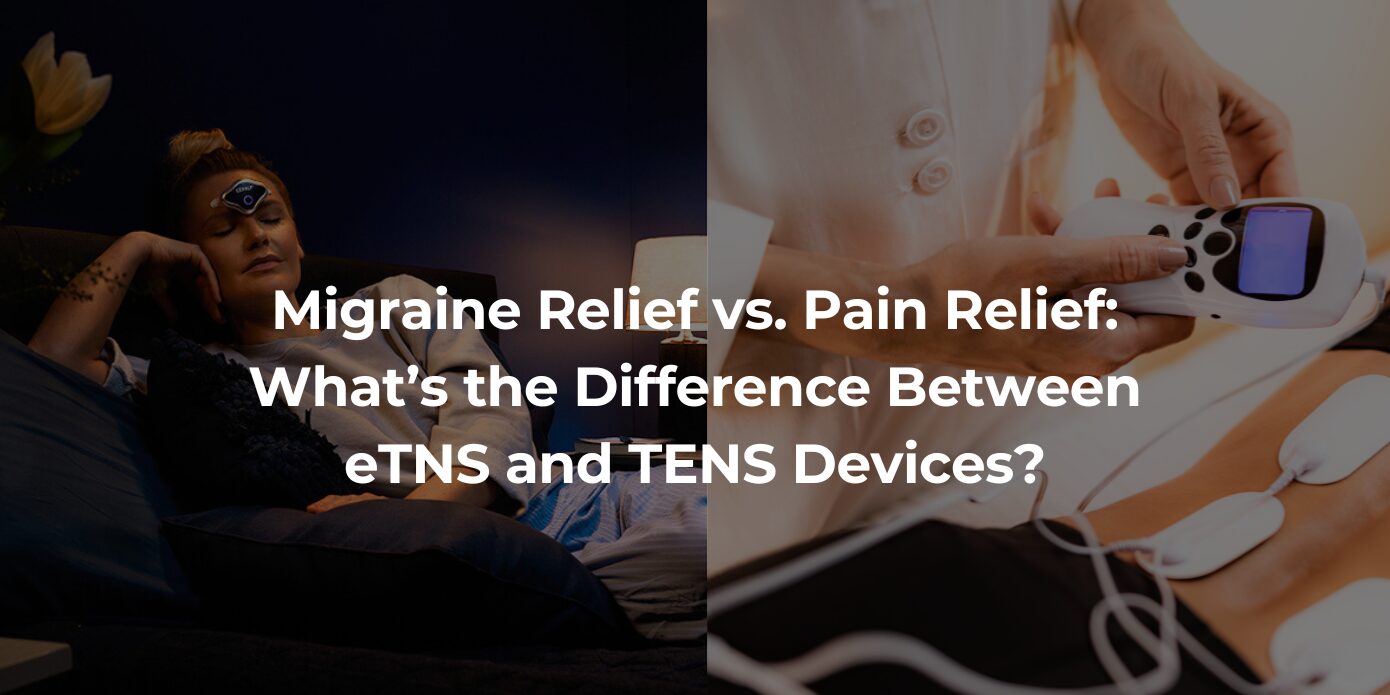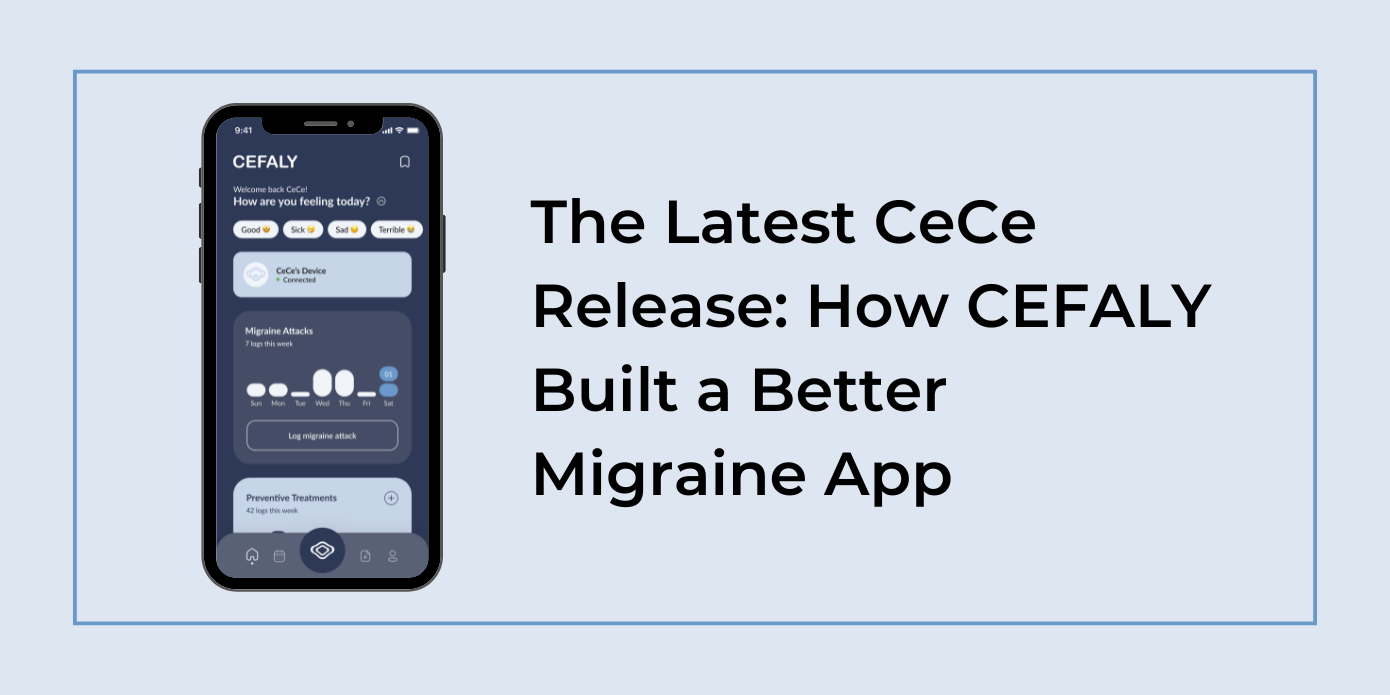By Danielle Vinci | The Migraine Circle by CEFALY
Living with migraine means fighting two battles every day: the battle to function and feel better — and the battle to be seen, heard, and understood.
Migraine and mental health: an intertwined experience
This truth sits at the heart of our latest conversation on The Migraine Circle Podcast by CEFALY, where I was joined by Shruti Shivaramakrishnan — an advocate, artist, creator, and the voice behind @chronicallymeh. If you live with migraine, chronic illness, or invisible pain, Shruti’s story will feel like a warm, honest mirror. She doesn’t sugarcoat her experience, and that’s what makes her messages so meaningful.
Shruti’s Journey: Growing Up with Migraine and Mental Health Struggles
Shruti’s first encounters with migraine started at just six years old, long before she had the words to describe the overwhelming mix of pain, fear, and sensory overload she was feeling. Diagnosed at an early age, she recalls a confusing and frustrating journey that was marked by misdiagnoses and a lack of understanding about how migraine impacts the brain and body.
But migraine wasn’t the only battle. As Shruti puts it, “For me, mental health challenges came first — or at the same time. I was having to work harder to just be normal.” Over the years, she’s come to understand that her mental health and migraine are deeply intertwined. Flare-ups in one often fuel the other.
Building a Migraine and Mental Health Management Toolkit
When Shruti moved to Canada during the pandemic, she was told she’d have to wait over two years to see a specialist. That’s when she took matters into her own hands and invested in a CEFALY device.
“CEFALY was the first tool that gave me any sense of control,” Shruti says. “It helped me feel like I had something I could rely on.” When attacks hit hard, knowing she had a device by her side made the difference — not only for her pain, but for her anxiety.
From there, her toolkit began to grow. Today it includes therapy, medication, cognitive behavioral therapy (CBT), aromatherapy, FL-41 glasses, ice packs, art, music, and even carefully chosen clothes for flare-up days. “You can never have too many tools,” Shruti says. “Different days need different kinds of help.”
Get Drug-Free Migraine Relief With CEFALY
Shop Now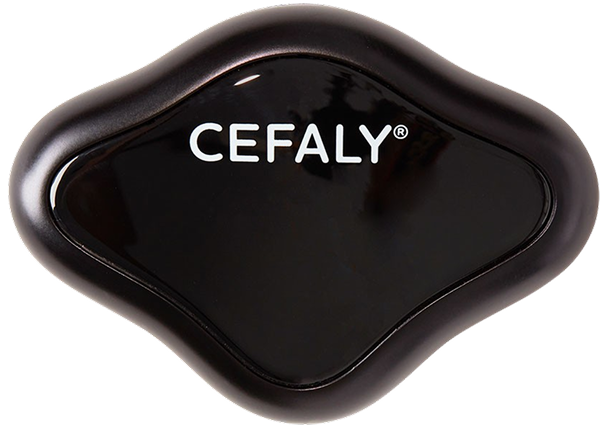
90-day money back guarantee
FDA-cleared
financing available
Gentle Grounding Practices for Migraine and Anxiety Relief
While she’s built a robust care routine, one non-negotiable remains: alone time. “That’s what grounds me,” she says. “Even if I get home at 2:30 a.m., I’m up at 4:30 to get that quiet moment.” Whether it’s tea, journaling, yoga, or just sitting in silence, that early solitude sets the tone for her day and helps calm her nervous system.
One grounding technique she learned through pain reprocessing therapy is to focus on a body part that doesn’t hurt. “I touch my nose, because I can’t really feel it, and that reminds me that not all of me is in pain. Somehow, that helps.”
How Shruti Advocates for Herself Through Brain Fog and Fear
Despite how openly Shruti shares her experience online, she still struggles to speak up in doctor’s offices. “My mouth goes dry. My heart races. It feels like I’m about to take an exam.” That’s why she now prepares scripts using tools like ChatGPT, so she can advocate for herself even through brain fog and fear.
Her advice to others? “Admit to yourself that you’re struggling. Ask for help. Try new things. And trust that you will find what works for you.”

Understanding that Migraine and Mental Health Recovery Isn’t Linear
Shruti reminds us that the migraine treatment journey isn’t linear. Some days are red, some yellow, some green. That’s why she uses a color-coded “traffic light” tracker for her symptoms. “It’s fun to color, even on bad days. And it keeps me from spiraling into overanalyzing everything.”
For Shruti, managing both migraine and mental health means giving herself grace. “There’s no race here. Nobody’s handing out prizes for pushing through pain. The most powerful thing we can do is move at our own pace.”
A Mantra for Migraine and Mental Health Resilience
When I asked her for a mantra she holds onto during the hardest days, Shruti didn’t hesitate:
“One breath at a time.”
Simple, powerful, and full of truth.
Want to learn more about Shruti’s journey and the tools that help her cope?
Visit @chronicallymeh on Instagram, and explore more migraine and mental health resources at cefaly.com.
Your pain is real. Your path to healing doesn’t have to be perfect. It just has to be yours.
Try CEFALY for migraine relief
Don’t let migraine pain stop you from performing your best. If you’re ready to try CEFALY, purchase your device today with our 90-day money-back guarantee.
